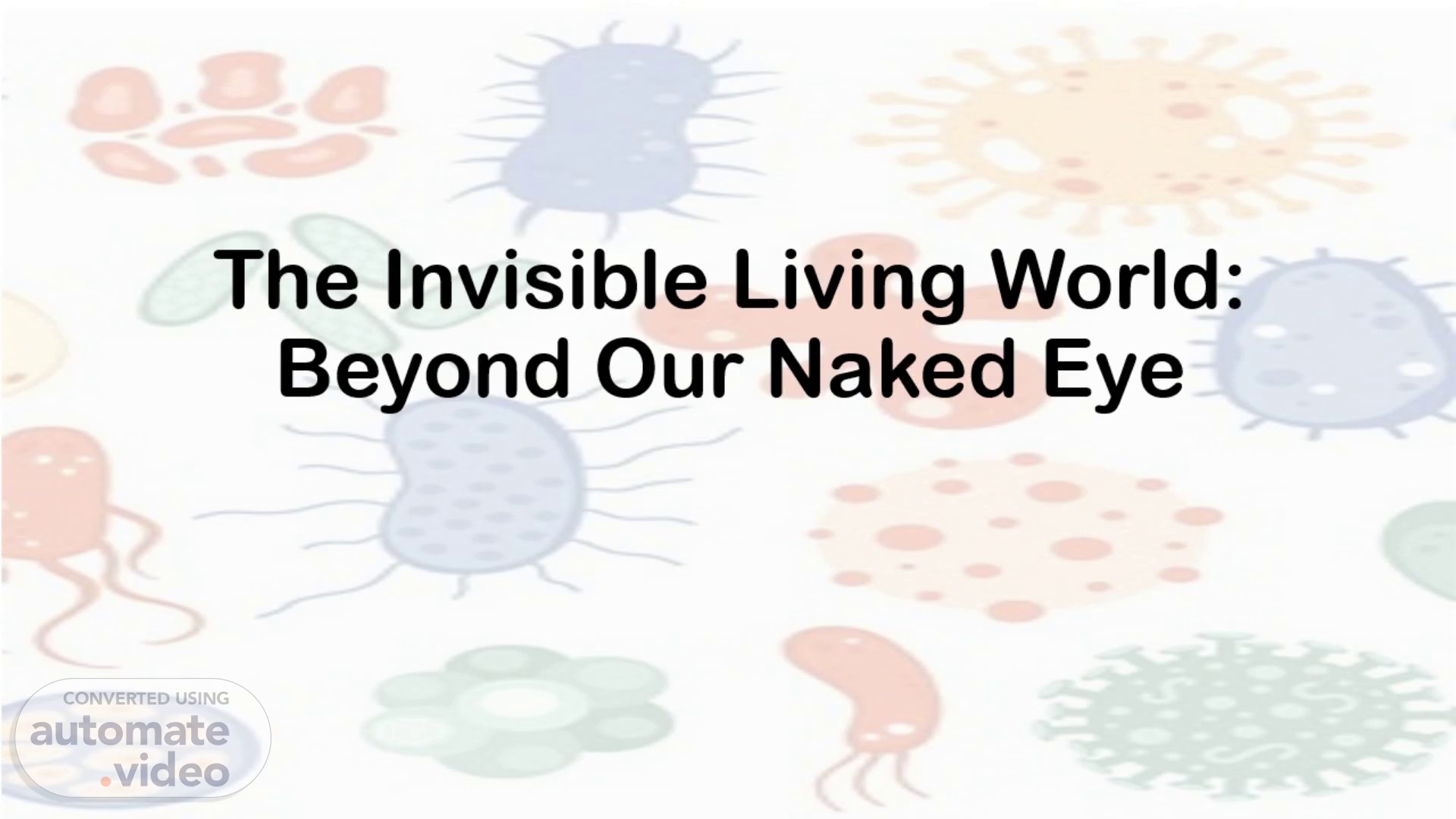Scene 1 (0s)
[Audio] The Invisible Living World: Beyond Our Naked Eye.
Scene 2 (7s)
[Audio] Have you ever wondered what you might see if the invisible world around you became visible? If we could see the tiny germs (microorganisms) around us, the world would look very different: Our hands and skin would be covered in tiny living things. The air would be full of floating germs, like dust. Tables, phones, and doorknobs would have little bugs crawling on them. Our food would show friendly germs helping it rot, rise, or ferment. Our bodies would look like homes for trillions of tiny creatures..
Scene 3 (40s)
[Audio] How do you think your observation of this hidden world might change the way you think about size, complexity, or even what counts as ‘living’? Seeing the world of microorganisms could change how we think in many simple but big ways: Size: We might realize that even the tiniest things can have a huge impact. Tiny germs can help us or hurt us, even though we can’t see them. Complexity: We’d see that small things live in busy, detailed worlds—just like we do. A single drop of water could have thousands of tiny living things, each doing its own job. What is ‘living’: We might start to see life in new ways. Even things without brains or eyes—like bacteria—move, eat, grow, and help shape the world. They are alive, too..
Scene 4 (1m 32s)
[Audio] Have you thought how these tiny living beings interact with each other? Yes! Even though they are tiny, microorganisms are always interacting. Here's how, in simple terms: They help each other: Some germs work together. For example, one kind might break down food, and another might eat what’s left. They fight each other: Some germs try to take over, so others protect their space. This is like tiny battles happening all the time. They talk: Microbes send tiny chemical signals to each other. It’s like they have their own way of "talking.“ They live in groups: Microorganisms often stick together in large groups called colonies or biofilms—like a little city of germs. These small creatures live busy lives, full of teamwork, competition, and communication—even though we can’t see it! Have you thought how these tiny living beings interact with each other? Yes! Even though they are tiny, microorganisms are always interacting. Here's how, in simple terms: They help each other: Some germs work together. For example, one kind might break down food, and another might eat what's left. They fight each other: Some germs try to take over, so others protect their space. This is like tiny battles happening all the time. They talk: Microbes send tiny chemical signals to each other. It's like they have their own way of "talking." They live in groups: Microorganisms often stick together in large groups called colonies or biofilms—like a little city of germs. These small creatures live busy lives, full of teamwork, competition, and communication—even though we can't see it!.
